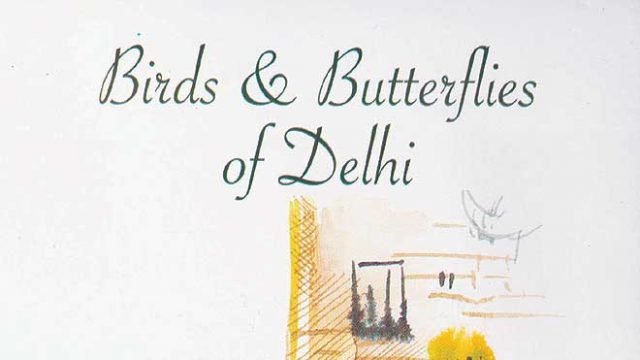This field guide to the birds of Delhi, I will admit, leaves me in a quandary. In the light of the illustrious birders and naturalists who have compiled guides with just such a purpose, the authority they earned before they ventured to share their knowledge and, more importantly, in the light of the standards they have set, my first impulse is to depress the pretensions of this one. The writer is a young man: he brought out his first book, Bird by Bird, when he was 19. He emerges four years later with this publication. He is also, the front of the book informs me, an aspiring journalist. The heart sinks, for this field guide is the result of mediocre writing meeting what must be considerable ambition. On the other hand, one must refrain, perhaps, from churlishly slapping down youthful enthusiasm?
In any case, it makes more sense to examine the book and put aside the author. Zaidi looks at roughly 90 common birds and 24 butterflies found in and around Delhi. In zooming in on Delhi, he makes a good choice. The capital is a hotspot as far as megalopolises go — it harbours nearly 450 species of birds and about 70 butterfly species. The book’s format is easy to use. A double spread is devoted to each species: the left page contains an illustration (bird drawings are by Mohammad Anwar and the butterflies are rendered by Hans Ram Yadav) and the facing page contains such details as Latin name, size, diet, call and a thumbnail indicating spots where it might be found. In his descriptions, Zaidi wisely aims for an informal, chatty style and achieves it; his objective is to introduce the bird, offer a little nugget of trivia, now and then a line about his own experience with the bird or, more often, a tepid witticism on its name (for instance, “When Cuckoos don’t make nests, how did we have a movie called One Flew Over the Cuckoo’s Nest?” or on the Paradise Flycatcher: “Why would we need Flycatchers in Paradise?”). In short, a watermark imitation of Sálim Ali’s seminal notes in his The Book of Indian Birds.
The illustrations are good. Vivid, they occupy a large part of one page and are one reason why this book might be useful to beginners. Annoyingly though, the illustration pages contain three images — the biggest one in the middle is the bird being talked about, but the other two are used randomly as design elements. The guide is a little too heavy to be ideal, but it combines birds and butterflies. I, however, will still be holding on to my trusty Grimmett, Inskipp & Inskipp.
A beginners’ guide to birdwatching in Delhi
The national capital harbours nearly 450 species of birds and about 70 butterfly species

A beginners’ guide to birdwatching in Delhi
A beginners’ guide to birdwatching in Delhi



